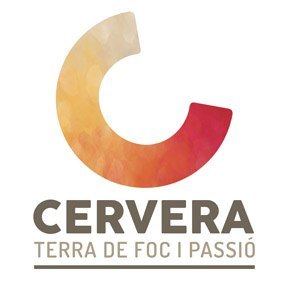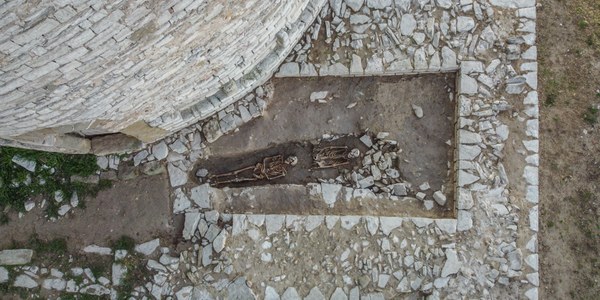The past 30 December 2022 concluded the last archaeological intervention in Sant Pere el Gros de Cervera, the Benedictine priory established in the 11th century that depended on the Ripoll monastery.
The action took place during the last weeks of December with the aim of completing the excavation of a burial pit located in one of the spaces attached to the church. This grave had been identified during the work camp for young people carried out in the month of July 2022.
The works carried out have uncovered the successive and overlapping burials of three elderly male individuals who were kept in anatomical connection. The most recent individual was preserved complete. The other two were anterior and were missing their lower limbs, that had been affected by the most modern burial. Besides, in the filling of the pit, other human remains were recovered that at least raise the number of individuals identified to six. It is hoped that the anthropological study of the exhumed remains can be started soon. This analysis will allow to determine paleodemographic and paleopathological aspects of the recovered individuals.
The absence of materials associated with the burials does not allow, for now, determine the chronology of these burials. However, to install·lation of the pit in the middle of a room attached to the church suggests that, at the time of the burials, this space must have been abandoned and very possibly demolished. Since there is news from the mid-18th century that indicates that the priory was still partially standing, as a preliminary hypothesis it can be proposed that these burials were carried out from the second half of the 18th century or, maybe, during the nineteenth century. Anyway, the remains discovered highlight the funerary use of the surroundings of Sant Pere el Gros after the abandonment of the monastic buildings.
This archaeological intervention, which has been promoted by the Paeria de Cervera, with the coordination of the Regional Museum of Cervera, has been executed by the company Iltirta Arqueologia SL, and has had financial aid from the Department of Culture of the Generalitat de Catalunya. The action is part of the project of historical-archaeological research and heritage recovery of the monument that is being developed from the Paeria de Cervera.
Sant Pere el Gros
The church of Sant Pere el Gros has a unique round plan. It is the most outstanding element of the entire monastic ensemble and, from 2003, it is declared a cultural asset of national interest (BCIN). The temple maintains its integrity and is in a very good state of preservation. However, the other monastic dependencies are preserved torn down and hidden under the sun. The first archaeological research work on the monument was carried out in the 1960s by Agustí Duran and Sanpere. L’any 2010 a specific archaeological intervention was carried out and the 2016 a consolidation and restoration campaign. From 2021 excavation work has resumed with the aim of improving knowledge of the monument, enrich the explanatory speech and, in the last instance, value and make visible the heritage wealth of this medieval archaeological and architectural ensemble.
Information and image provided by the Regional Museum of Cervera

